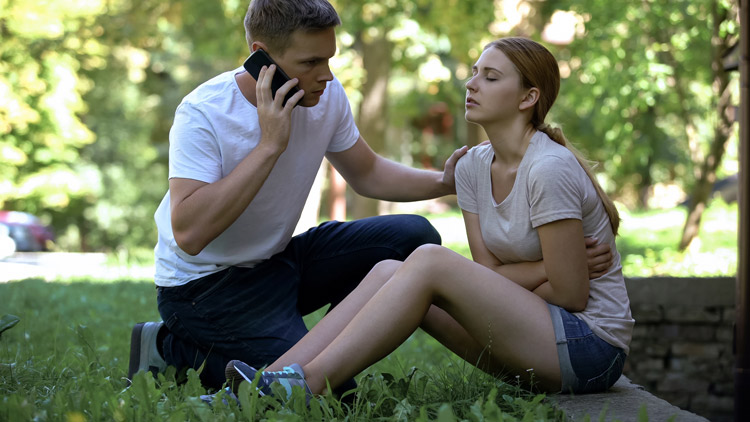 The opioid epidemic is a public health emergency, but many people don’t think about the potential consequences of opioid abuse until it’s too late. If a loved one is taking opioids, even if they’ve been prescribed by a doctor, it’s vital that you educate yourself about the signs of a potential overdose.
The opioid epidemic is a public health emergency, but many people don’t think about the potential consequences of opioid abuse until it’s too late. If a loved one is taking opioids, even if they’ve been prescribed by a doctor, it’s vital that you educate yourself about the signs of a potential overdose.
What Causes an Opioid Overdose?
An opioid overdose can occur whenever someone takes prescription opioids such as OxyContin, Vicodin, or Percocet or illegal opioids such as heroin. Opioids produce central nervous system depression that can slow breathing to dangerous levels. Neurological signals are also slowed, which causes abnormal heart rhythms.
Risk factors for an opioid overdose include:
- Demographic characteristics: Adults over age 65, people with sleep apnea, individuals with reduced kidney or liver function, or those taking multiple prescriptions to manage chronic illnesses are more likely to become victims of an accidental overdose.
- High tolerance: Over time, people who use opioids develop a tolerance to the drug and need to take higher doses to achieve the same euphoric effects. However, there is still a limit to what the brain and body can handle. Higher doses increase the risk of an overdose, but it’s impossible to know how much is “too much” until someone exceeds the limit.
- Mixing drugs: Mixing opioids with other drugs increases the risk of an overdose by magnifying the sedative effects of the opioids. Overdoses involving opioids and alcohol are the most common.
- Method of use: Someone who injects or snorts opioids faces a higher risk of overdose than someone who relies on pills because the drug hits the bloodstream more quickly with these methods.
- Relapse after treatment: Unfortunately, relapse after addiction treatment is not uncommon. The danger with relapsing after treatment is that the body’s tolerance has decreased due to the detoxification process. Someone who completes a 30-day residential treatment plan and then relapses a few weeks later faces a high risk of overdose because their body is unable to handle their previous level of opioid use.
- Mental health issues: Although it is believed that most opioid overdoses are accidental, someone who is suffering from severe depression or other serious mental health issues may overdose as a means of ending their own life.
How Do I Know If Someone Has Overdosed?
People who have taken high doses of opioids are unlikely to notice the signs of an overdose in themselves. This makes it vital for the people around them to take prompt action when an overdose is suspected.
Signs of opioid overdose include:
- Pinpoint pupils
- Slowed breathing
- Pale face
- Blue or purplish color on the fingernails and lips
- Clammy skin
- Limp body
- Vomiting
- Making gurgling noises
- Trouble speaking
- Unresponsiveness
- Seizures
Someone experiencing an opioid overdose will not necessarily have all of these symptoms. However, the more symptoms you notice, the greater the likelihood that an overdose has occurred.
What Should I Do If Someone Has Overdosed?
An overdose is a medical emergency. If you suspect that someone has overdosed:
- Call 911 for assistance. (Pennsylvania, like most other states, has a Good Samaritan law that protects you from any potential liability for drug-related offenses if you call authorities to obtain treatment for someone who is suffering from a suspected overdose.)
- If you know what the person has taken, provide this information when you call for help.
- Try to keep the person upright and awake.
- If the person must lie down, lie them on their side to prevent choking.
- If they are not breathing, perform CPR.
- Do not leave the person alone until help arrives.
Paramedics and other first responders can administer naloxone. This medication temporarily blocks the effects of opioids to allow the person time to seek treatment at a hospital. For this reason, it’s sometimes called a “save shot” or “rescue shot”.
The Pennsylvania Secretary of Health, Dr. Rachel Levine, has created a standing order that allows members of the public to obtain naloxone without a prescription at their local pharmacy. If your loved one is taking opioids and you are worried about the potential for an overdose, having naloxone on hand is a smart safety precaution.
How Can Treatment Help?
Most people who suffer an overdose begin using opioids with a legitimate prescription, so there is often a blurred line between dependency and abuse. However, an overdose indicates that addiction treatment is likely necessary.
Opioid addiction, like other forms of substance use disorder, is a biologically-based brain disease with complex environmental triggers. It’s not caused by lack of willpower, so professional treatment is the only way to help a loved one get sober.
As the leading substance abuse treatment and detox center in Pennsylvania, St. Joseph Institute for Addiction provides men and women with the care they need to overcome opioid addiction and embrace the possibilities of a future free from substance abuse. Treatment begins with a medically-managed detox to address the symptoms of withdrawal. Detox is followed by individual and group counseling, as well as various holistic treatments, to build the foundation for lasting sobriety. Outpatient therapy, medication-assisted treatment, and participation in self-help groups such as Narcotics Anonymous (NA) may be recommended as part of a person’s full continuum of care.
The recovery process isn’t easy, but there’s always hope for a better future. Whether your loved one has already suffered an overdose or you are worried about the possibility, prompt action is essential.
To learn more about SJI Pennsylvania opioid addiction treatment, and our programs, please contact us at (814) 228-8881.


